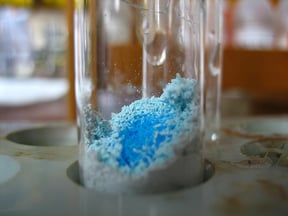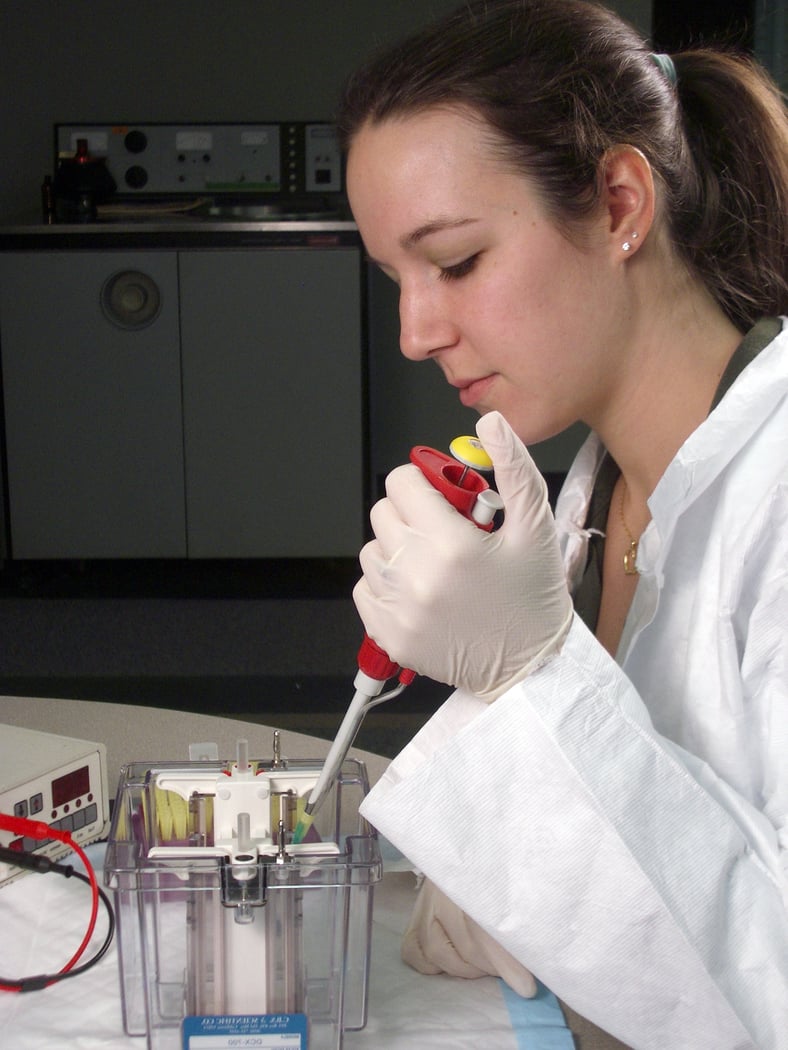SDS-PAGE (sodium dodecyl sulfate polyacrylamide gel electrophoresis) is a common laboratory technique in which proteins are separated by their size by running the proteins through a polyacrylamide matrix by applying an electrical field across the matrix. A native gel electrophoresis is when there aren’t any detergents present while running the assay. This means that the factors affecting the rate of migration for proteins in a native gel electrophoresis assay are the protein’s molecular radius and total net charge across the protein. The molecular radius is determined by the complex tertiary structure and the net charge is the sum of all the positive and negative charges across all the protein’s amino acids. While native gel electrophoresis has its uses, it can be very challenging to interpret, proteins can migrate to either of the electrodes and can separate variably based on their tertiary shape. For these reasons most electrophoresis assays are run with some detergent present (usually SDS) so that only one factor (protein size) influences the rate of migration.
Detergents and their role in successful SDS-PAGE electrophoresis
Topics: Protein Electrophoresis, Detergents
3 Protein Gel Stains and When You Should Use Them
After the protein bands have been separated by electrophoresis, researchers perform a dye-binding or color-producing chemical reaction to visualize the proteins embedded within the pores of the polyacrylamide gel matrix. Some of the most popular in-gel detection methods include staining with Coomassie dye, metallic silver, and zinc.
Topics: Protein Electrophoresis, Protein Detection
Coomassie, Enhanced Coomassie, and Colloidal Coomassie: What’s the Difference?
Among all the protein staining techniques available today, most researchers around the world prefer using Coomassie dyes (also known as Coomassie brilliant blue) in visualizing electrophoresed proteins. There are a number of good reasons why they do. Here are some of them:
Topics: Protein Electrophoresis, Protein Detection
How to Choose between G250 or R250 Coomassie Dyes
 Proteins separated by gel electrophoresis can be visualized using different staining procedures, including Coomassie stains, silver stains and fluorescent stains. Among these staining techniques, silver staining undoubtedly offers the highest sensitivity. However, it also involves a complex and relatively time-consuming protocol, has a low linear dynamic range and reproducibility, and is not compatible with mass spectrometry.
Proteins separated by gel electrophoresis can be visualized using different staining procedures, including Coomassie stains, silver stains and fluorescent stains. Among these staining techniques, silver staining undoubtedly offers the highest sensitivity. However, it also involves a complex and relatively time-consuming protocol, has a low linear dynamic range and reproducibility, and is not compatible with mass spectrometry.
Topics: Protein Electrophoresis, Protein Detection






